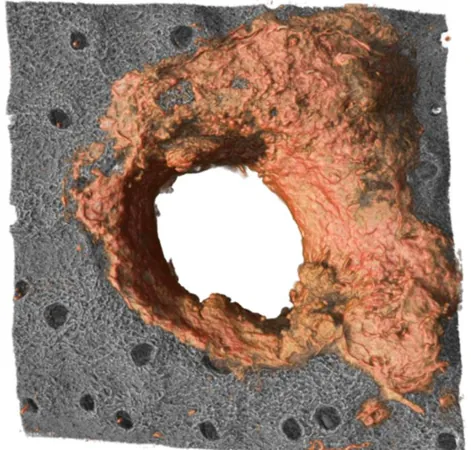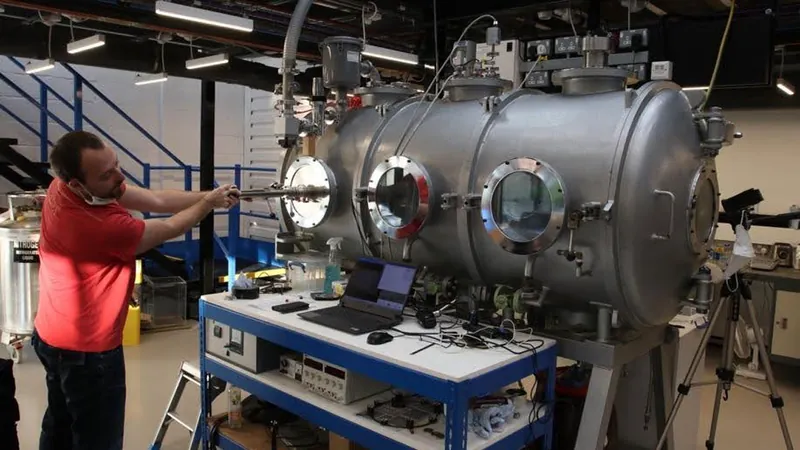
Revolutionary Discovery: Neutrophils Boost Mouse Skin Defense with Extracellular Matrix Production!
2025-03-21
Author: Ming
Introduction
In a groundbreaking study, researchers at the Centro Nacional de Investigaciones Cardiovasculares (CNIC) have unveiled a remarkable group of specialized neutrophils residing in mouse skin that play a pivotal role in producing components of the extracellular matrix (ECM). This novel function aids in maintaining the skin’s integrity, significantly enhancing its resistance against harmful microorganisms.
Transforming Our Comprehension of the Immune System
This revelation transforms our comprehension of the immune system, illustrating its dual role—not only targeting potential pathogens but also fortifying the skin’s physical barrier to thwart these threats before they infiltrate the body. “These findings have the potential to help develop treatments aimed at strengthening the skin barrier for individuals suffering from inflammatory diseases or immunological disorders, including patients with diabetes and elderly populations,” stated lead researcher, Dr. Andrés Hidalgo.
Publication and Importance of the Study
Published in the prestigious journal *Nature*, the study titled "Matrix-producing neutrophils populate and shield the skin," emphasizes that the innate immune system has fine-tuned strategies to protect the organism from external challenges preemptively. The skin serves as our primary physical barrier against not only mechanical injuries but also myriad microbes that inhabit the outer skin layers.
Role of Neutrophils in Extracellular Matrix Production
Neutrophils, often recognized for their critical microbicidal functions, have now been identified as key players in the creation and remodeling of the subepidermal extracellular matrix. The ECM is crucial for preserving the skin’s structure and functionality, acting as a frontline barrier against microorganisms and toxins. Dr. Hidalgo elaborated, “The specialized neutrophils we discovered contribute to reinforcing the skin barrier through the production of collagen and other essential matrix proteins.”
Neutrophils Response to Injury
The study further reveals that these newly discovered neutrophils congregate within the skin, playing an essential role in both normal skin maintenance and in response to injury. They are capable of forming protective 'rings' of matrix around wounds, effectively shielding these areas from foreign molecules and pathogens.
Regulatory Mechanism of TGF-β Signaling
Interestingly, this study also highlights the regulatory mechanism of the TGF-β signaling pathway in modulating the structural functions of skin neutrophils. When researchers genetically modified mice to inhibit this pathway, the resulting skin exhibited increased fragility and permeability, showcasing the importance of TGF-β in ECM deposition. “Disabling the TGF-β receptor in neutrophils disrupted wound protection, allowing easier bacterial invasion,” the study noted.
Implications and Circadian Rhythm of Neutrophils
First author Dr. Tommaso Vicanolo emphasized the implications of these findings, stating, “...these neutrophils are essential for maintaining skin integrity under normal circumstances and respond to injuries by forming protective structures that fend off bacteria and toxins.” Hidalgo expressed that it signifies a more direct interplay between the immune system and the structural components of our bodies than once perceived.
Biological Rhythms and Tissue Defense
Another fascinating insight from the research is that these skin neutrophils exhibit a circadian rhythm, adjusting ECM production according to the body’s biological clock. This means that mouse skin is more resilient during nighttime, reflecting a peak in neutrophil activity. “This discovery opens exciting new avenues to explore how our internal biological rhythms impact tissue defense, regeneration, and repair,” Hidalgo suggested.
Future Directions and Collaborative Efforts
Currently affiliated with Yale University School of Medicine, Dr. Hidalgo and his team are excited about how this discovery could inform future strategies for treating skin diseases and immunological conditions—potentially transforming patient care.
Conclusion
In conclusion, this collaborative research effort, involving teams from CNIC along with laboratories in Germany, the United States, Singapore, and China, revolutionizes our understanding of the immune system’s protective capabilities and how we can harness this knowledge for medical advancements. The discovery of extracellular matrix-producing neutrophils may also signal new pathways in understanding fibrotic processes and cancer treatments.




 Brasil (PT)
Brasil (PT)
 Canada (EN)
Canada (EN)
 Chile (ES)
Chile (ES)
 Česko (CS)
Česko (CS)
 대한민국 (KO)
대한민국 (KO)
 España (ES)
España (ES)
 France (FR)
France (FR)
 Hong Kong (EN)
Hong Kong (EN)
 Italia (IT)
Italia (IT)
 日本 (JA)
日本 (JA)
 Magyarország (HU)
Magyarország (HU)
 Norge (NO)
Norge (NO)
 Polska (PL)
Polska (PL)
 Schweiz (DE)
Schweiz (DE)
 Singapore (EN)
Singapore (EN)
 Sverige (SV)
Sverige (SV)
 Suomi (FI)
Suomi (FI)
 Türkiye (TR)
Türkiye (TR)
 الإمارات العربية المتحدة (AR)
الإمارات العربية المتحدة (AR)